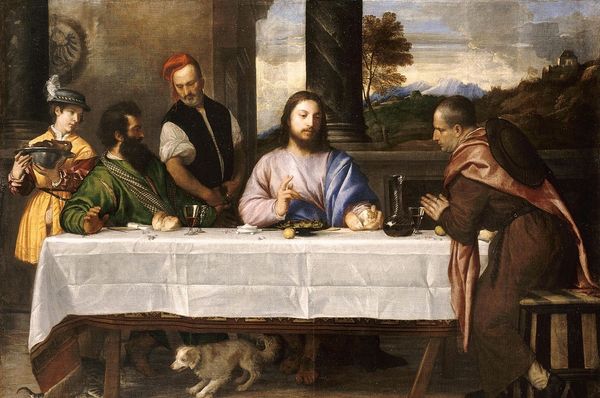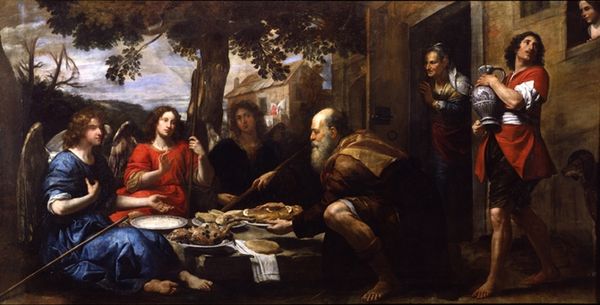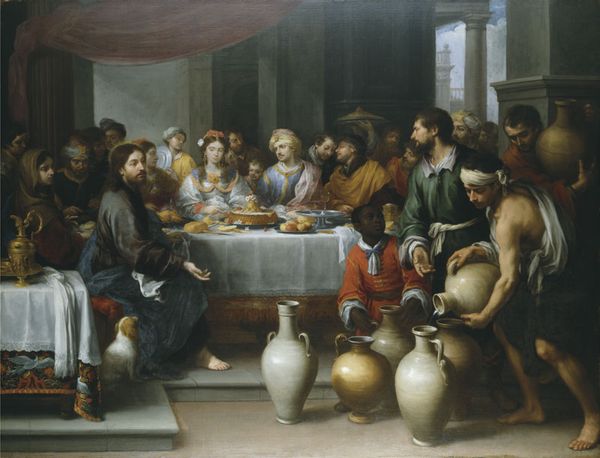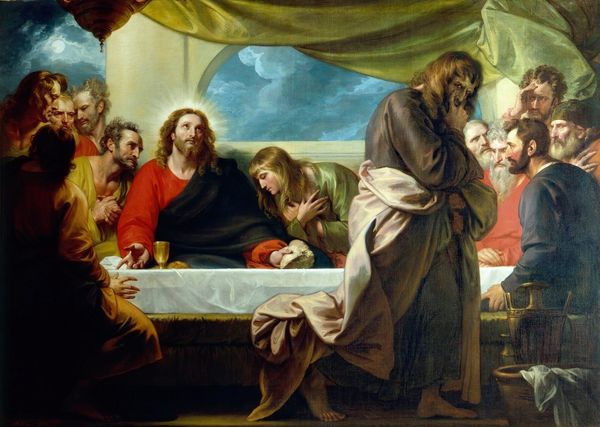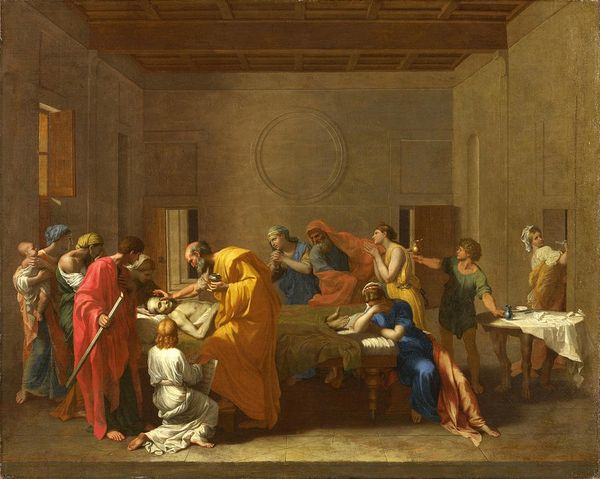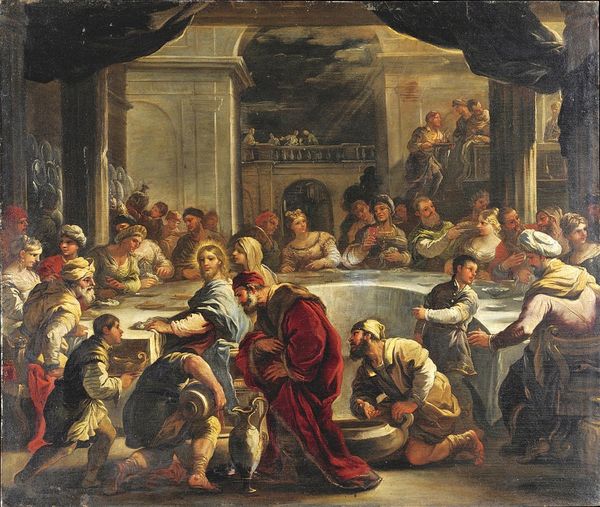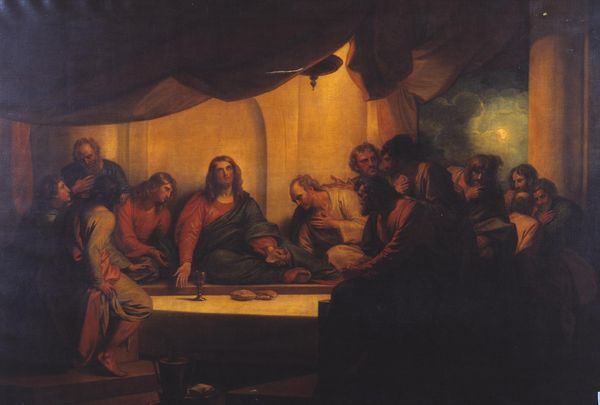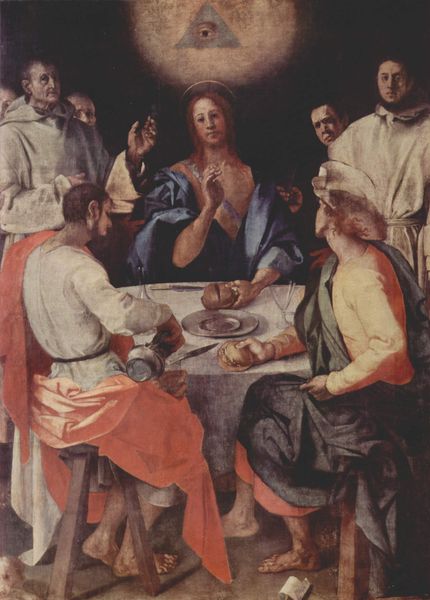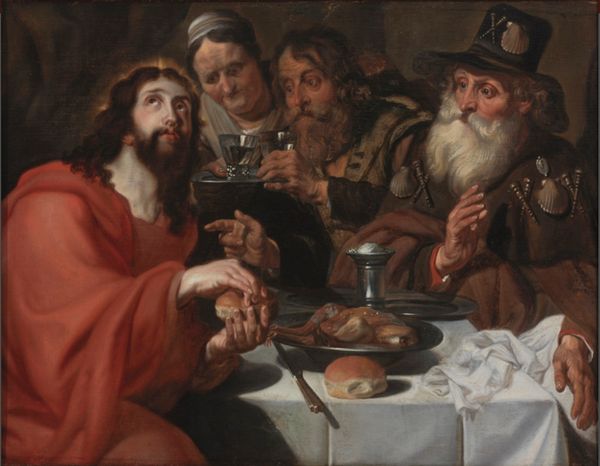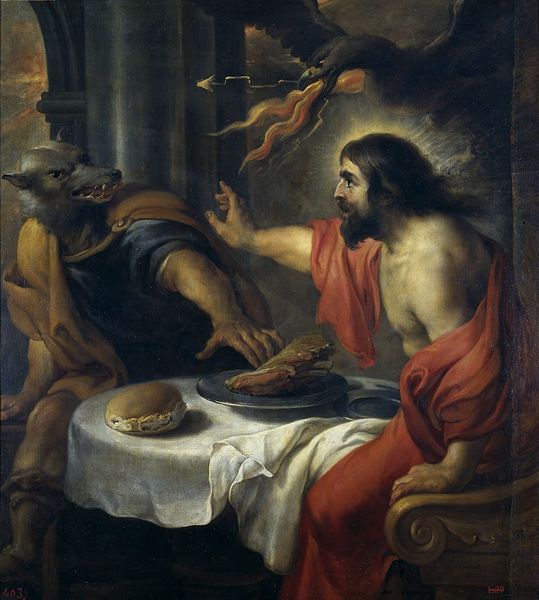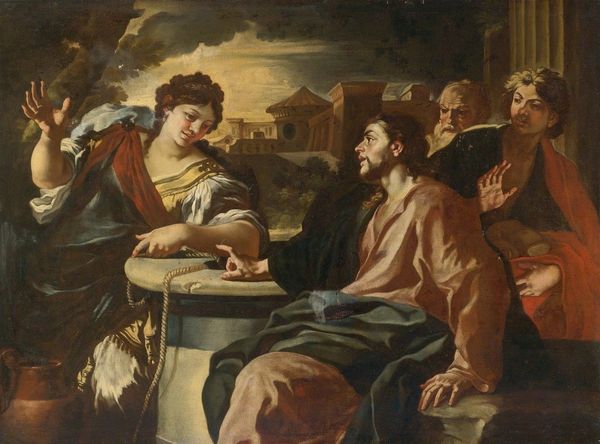
painting, oil-paint
#
narrative-art
#
baroque
#
painting
#
oil-paint
#
oil painting
#
group-portraits
#
genre-painting
#
history-painting
Copyright: Public domain
Editor: We’re looking at "The Supper at Emmaus" by Peter Paul Rubens, painted in 1638 using oil on canvas. The use of light feels dramatic and theatrical, like a spotlight illuminating the figures. What strikes you about this piece? Curator: Rubens situates the divine within the everyday, using the visual language of Baroque drama to convey complex socio-political ideas. This wasn't merely about illustrating a biblical story; it was about power, belief, and the very tangible ways those concepts shaped 17th-century life. Notice the intense realism alongside the idealized figures – how do you think that tension plays out? Editor: I see what you mean. It’s not just a straightforward religious scene. The characters seem caught between awe and...almost suspicion? Curator: Exactly. Consider who Rubens painted for – powerful elites deeply enmeshed in religious and political structures. These works often implicitly reinforce hierarchies. What details indicate social status, or challenge conventional expectations? For instance, what does it mean to include the ‘common’ man and a dog within a representation of a divine encounter? Editor: The parrot up above also strikes me as being…out of place? I suppose those everyday elements could serve to normalize this meeting in the present day, but also hint at underlying social complexities. Curator: Indeed. This piece isn’t simply a window onto the past, but a mirror reflecting enduring power dynamics, the tension between faith and doubt, and the visual strategies artists use to navigate such sensitive terrain. The use of Baroque dynamism certainly amplifies that. What’s your perspective on this new contextual reading? Editor: It's definitely shifted my view! I was focused on the aesthetic drama, but now I see the painting as much more actively engaging with the world around it. Thanks for pointing this out.
Comments
No comments
Be the first to comment and join the conversation on the ultimate creative platform.

